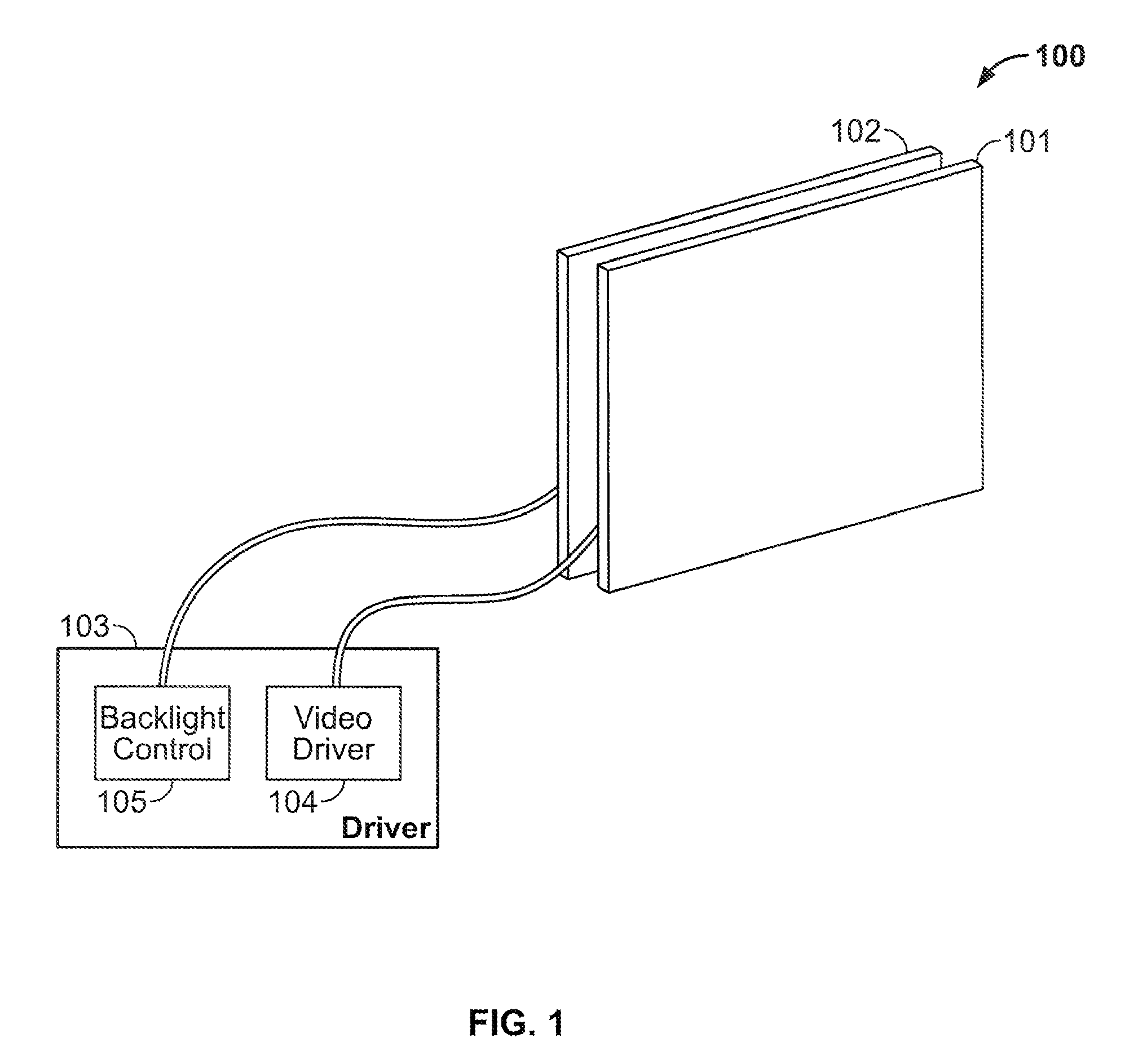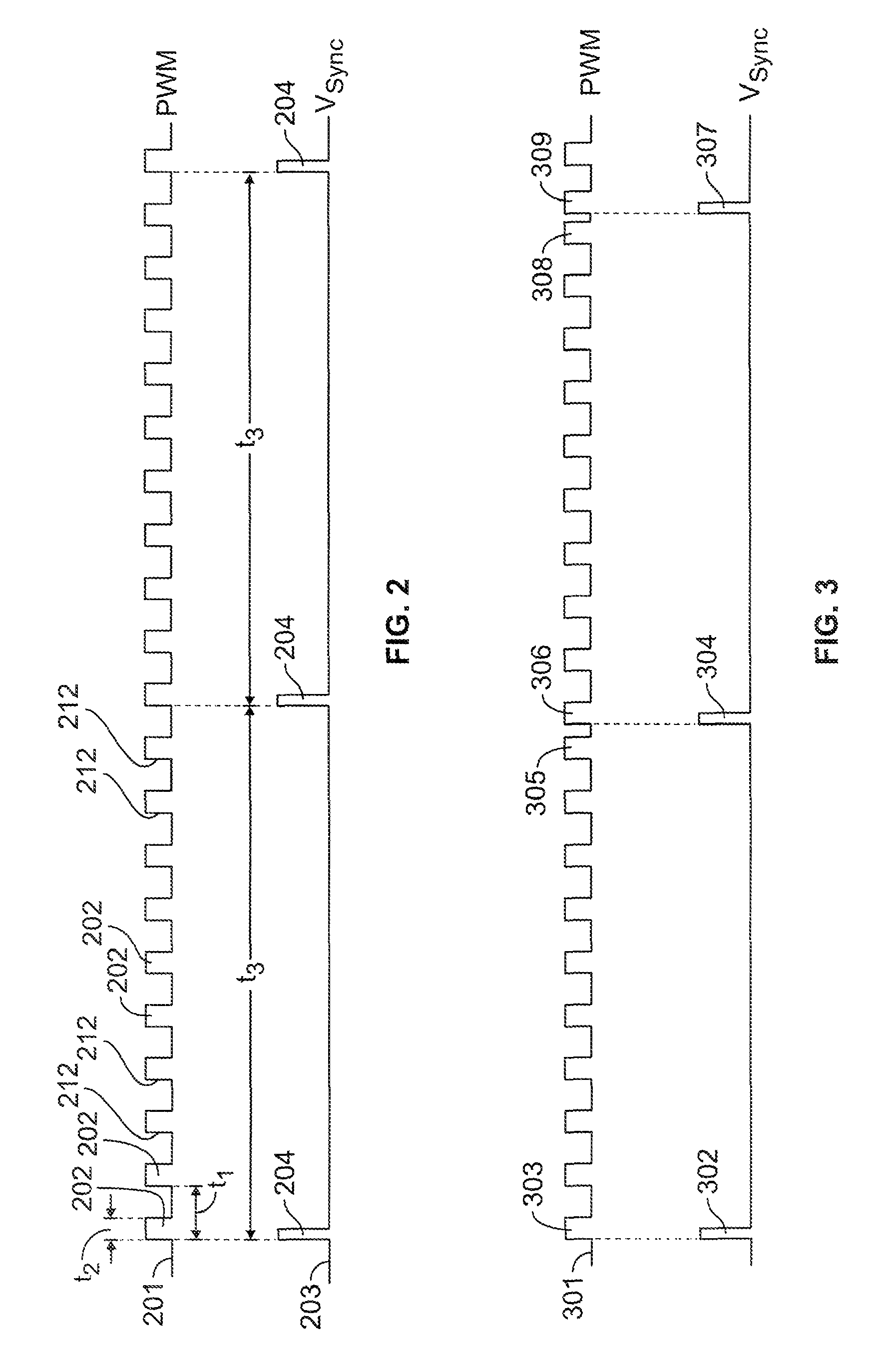Pulse-width modulation control for backlighting of a video display
a backlighting and video display technology, applied in lighting devices, instruments, light sources, etc., can solve the problems of high pulse-width modulation backlight control current pulse rate, unfavorable synchronization of both rates using a common clock source, motion artifacts, etc., to minimize or eliminate perceptible flicker, mitigate flicker effect, and minimize the effect of flicker
- Summary
- Abstract
- Description
- Claims
- Application Information
AI Technical Summary
Benefits of technology
Problems solved by technology
Method used
Image
Examples
Embodiment Construction
[0024]FIG. 1 shows, schematically, a video display 100 of the type with which the present invention may be used. Video display 100 includes a video array 101 which may be, e.g., a liquid crystal array as described above, and a backlighting source 102. Although backlighting source 102 is shown as having an area coextensive with that of video array 101, the actual light source of backlighting source 102 may occupy a small area, and its output may be spread over video array 101 using appropriate reflectors, light pipes, etc. (not shown).
[0025]Driver circuitry 103 may include a video driver 104 that drives video array 101, and a separate backlight control 105 for backlighting source 102.
[0026]FIG. 2 shows a train 201 of pulse-width modulated current pulses 202 for controlling backlighting unit 102. The pulse interval t1 is the duration between the rising edges 212 of adjacent pulses 202. The brightness of backlighting source 102 may be determined by the duty cycle of pulse train 201—i.e...
PUM
 Login to View More
Login to View More Abstract
Description
Claims
Application Information
 Login to View More
Login to View More - R&D
- Intellectual Property
- Life Sciences
- Materials
- Tech Scout
- Unparalleled Data Quality
- Higher Quality Content
- 60% Fewer Hallucinations
Browse by: Latest US Patents, China's latest patents, Technical Efficacy Thesaurus, Application Domain, Technology Topic, Popular Technical Reports.
© 2025 PatSnap. All rights reserved.Legal|Privacy policy|Modern Slavery Act Transparency Statement|Sitemap|About US| Contact US: help@patsnap.com



